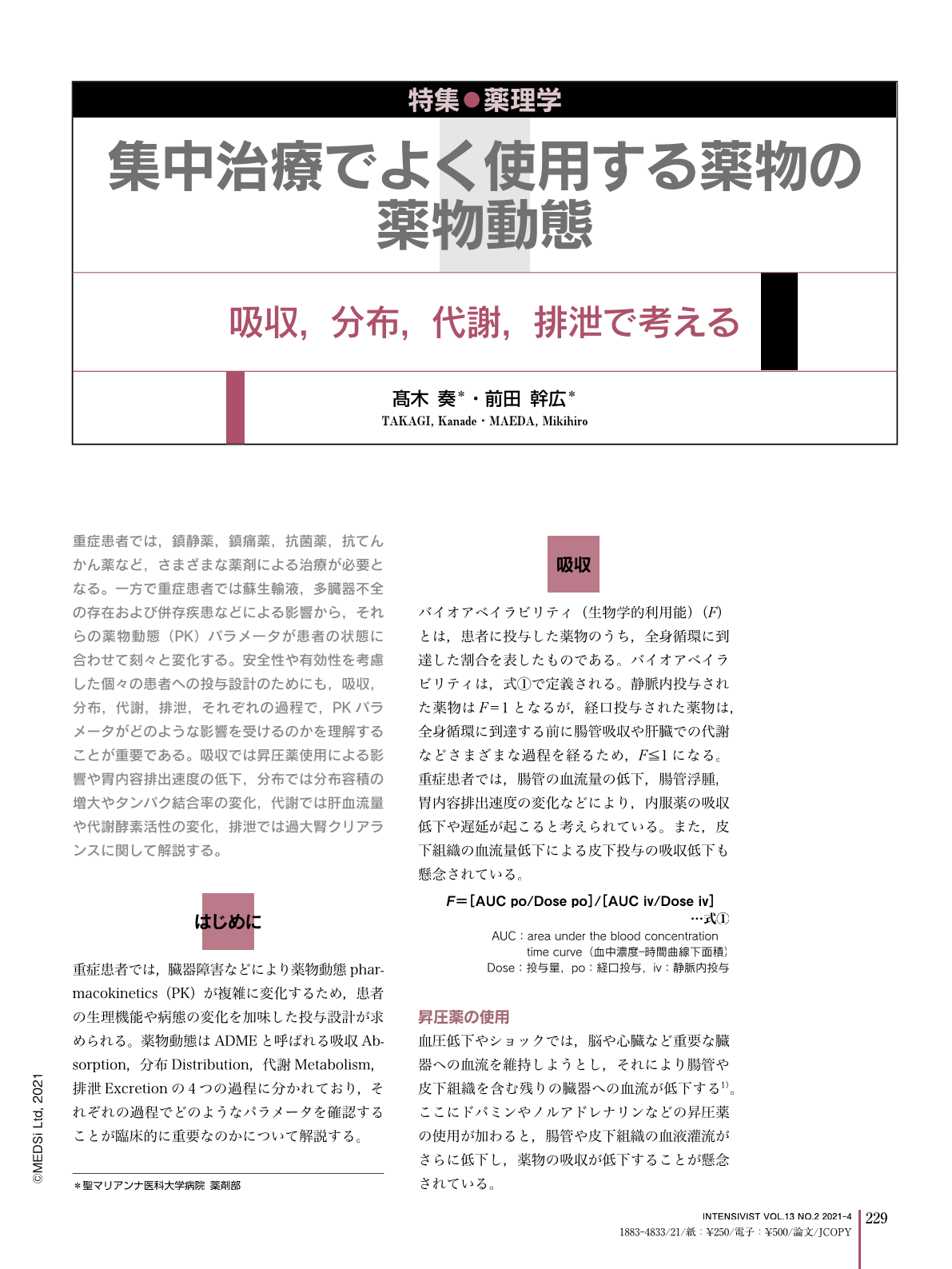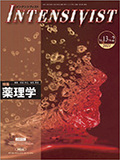Japanese
English
- 有料閲覧
- Abstract 文献概要
- 1ページ目 Look Inside
- 参考文献 Reference
- サイト内被引用 Cited by
重症患者では,鎮静薬,鎮痛薬,抗菌薬,抗てんかん薬など,さまざまな薬剤による治療が必要となる。一方で重症患者では蘇生輸液,多臓器不全の存在および併存疾患などによる影響から,それらの薬物動態(PK)パラメータが患者の状態に合わせて刻々と変化する。安全性や有効性を考慮した個々の患者への投与設計のためにも,吸収,分布,代謝,排泄,それぞれの過程で,PKパラメータがどのような影響を受けるのかを理解することが重要である。吸収では昇圧薬使用による影響や胃内容排出速度の低下,分布では分布容積の増大やタンパク結合率の変化,代謝では肝血流量や代謝酵素活性の変化,排泄では過大腎クリアランスに関して解説する。
Critically ill patients require treatment with a variety of drugs, including sedatives, analgesics, antibiotics, and antiepileptic drugs. Pharmacokinetic parameters of drugs used to treat critically ill patients are modulated by multiple factors, including fluid resuscitation, the presence of multiple organ dysfunction and/or comorbidities. It is important to understand how a drug is affected by absorption, distribution, metabolism, and elimination in order to guide administration to individual patients considering safety and efficacy. In drug absorption, we discuss the impact of vasopressor use and delayed gastric emptying. On the topic of drug distribution, we review the impact of increased volume of distribution and alterations in plasma protein binding. With drug metabolism, we discuss hepatic enzyme activity, protein binding, and hepatic blood flow. Finally, we review drug elimination in the critically ill patient and discuss the impact of augmented renal clearance.

Copyright © 2021, MEDICAL SCIENCES INTERNATIONAL, LTD. All rights reserved.


